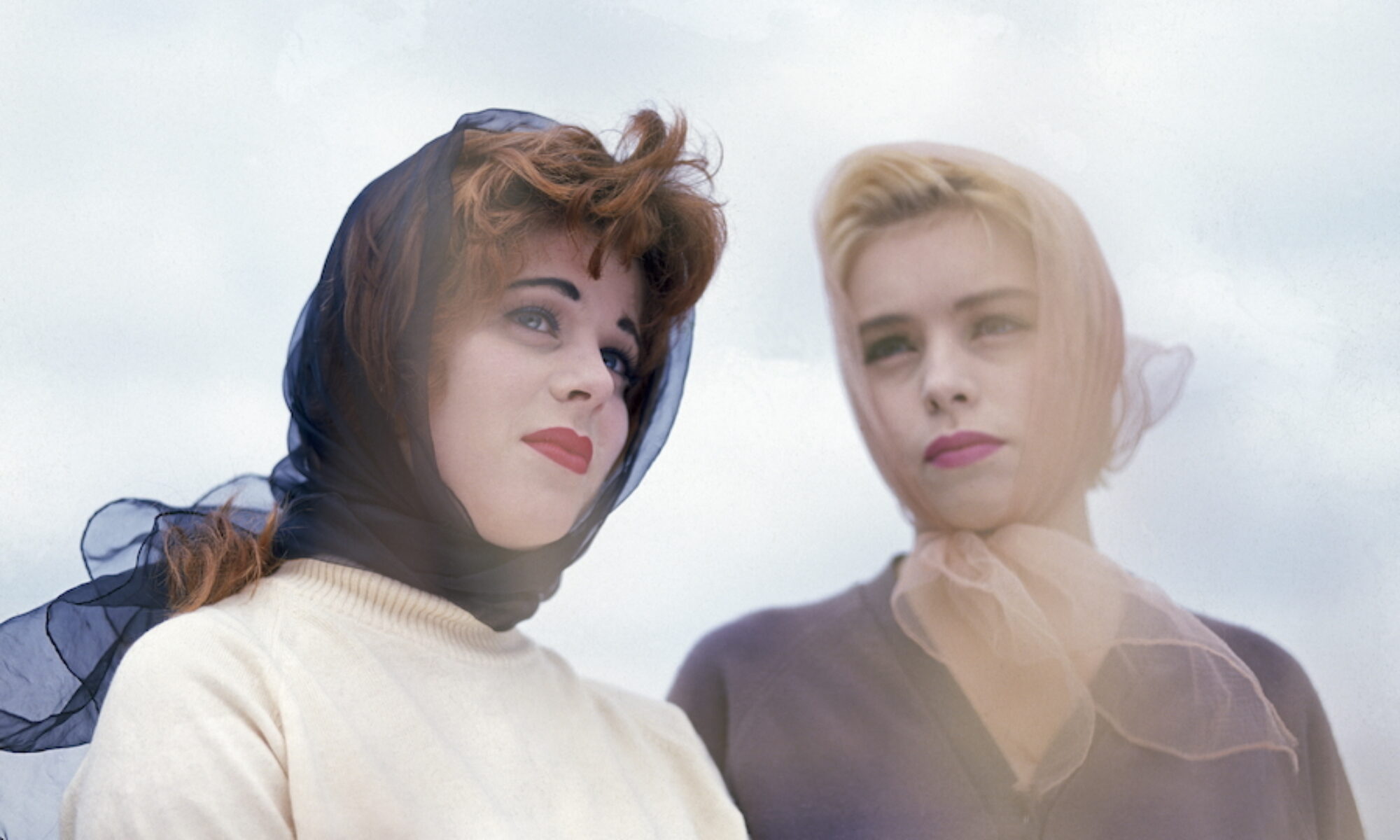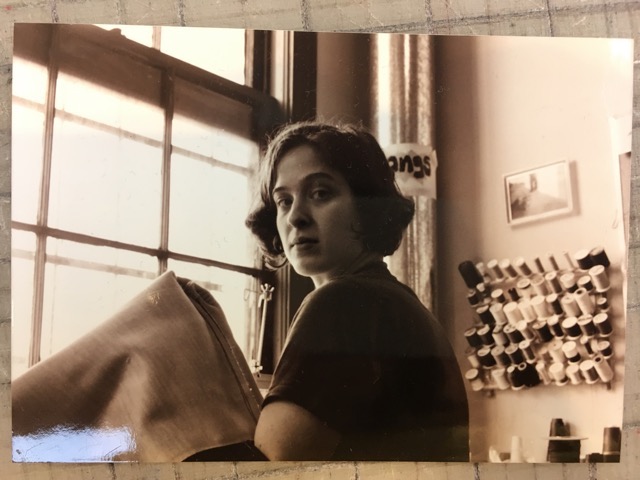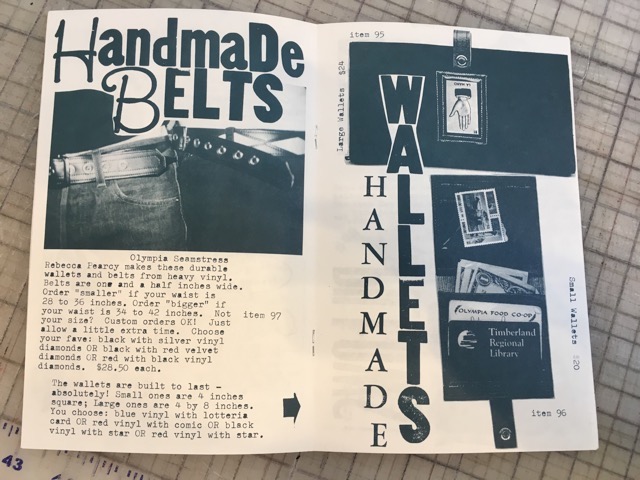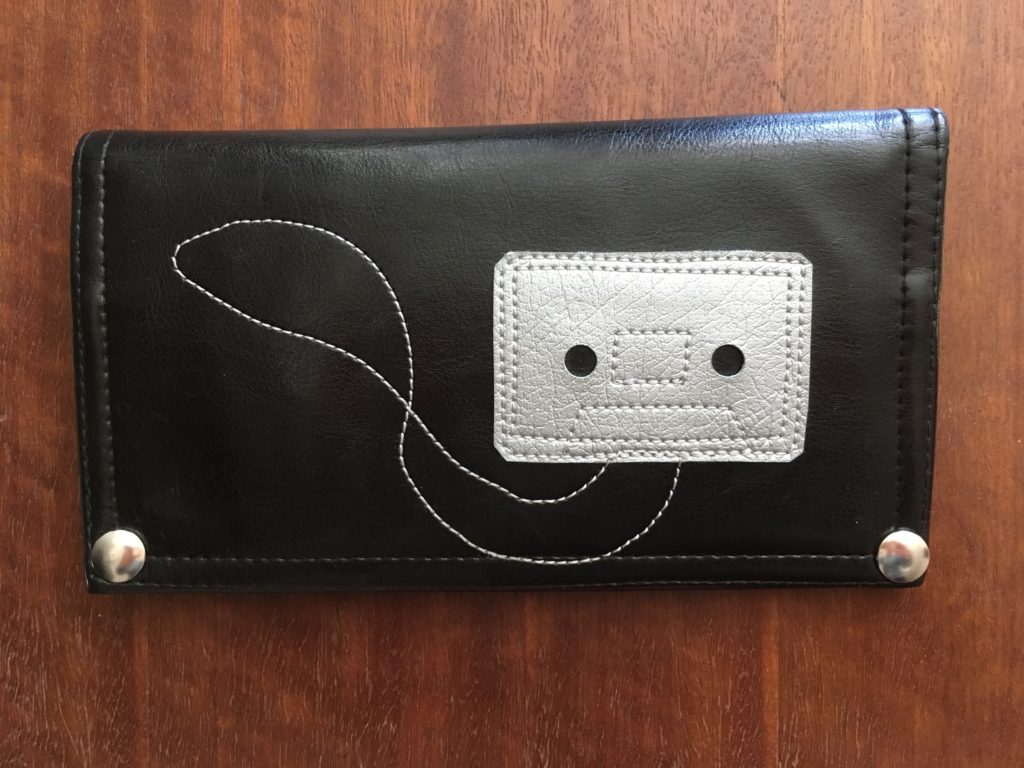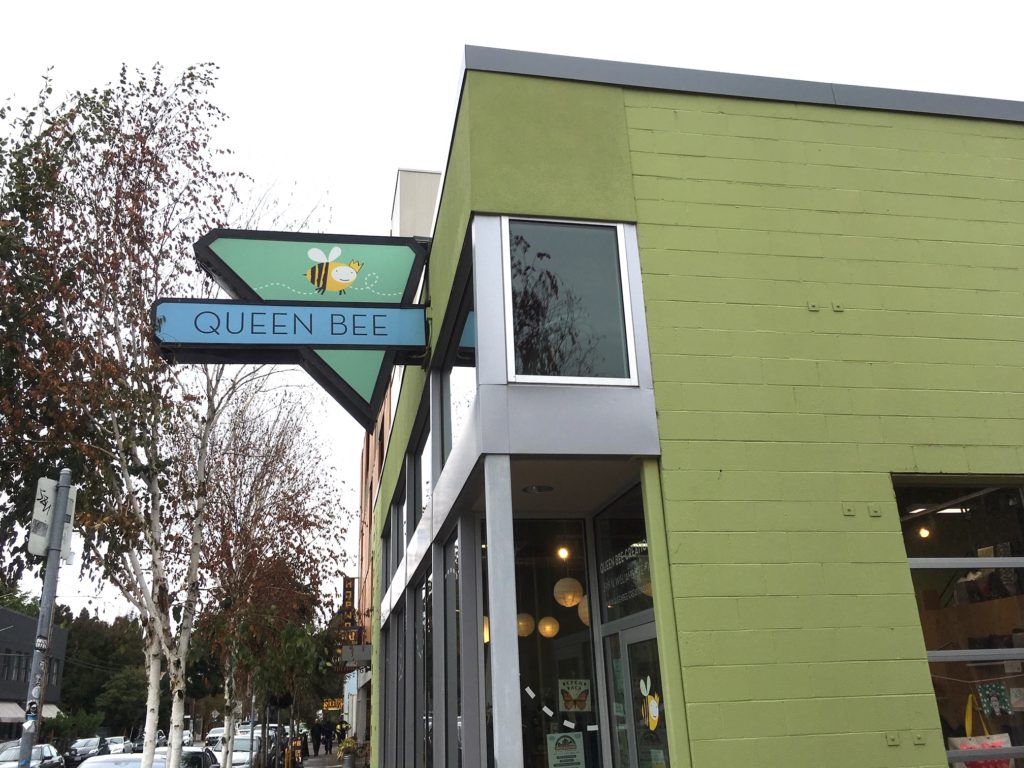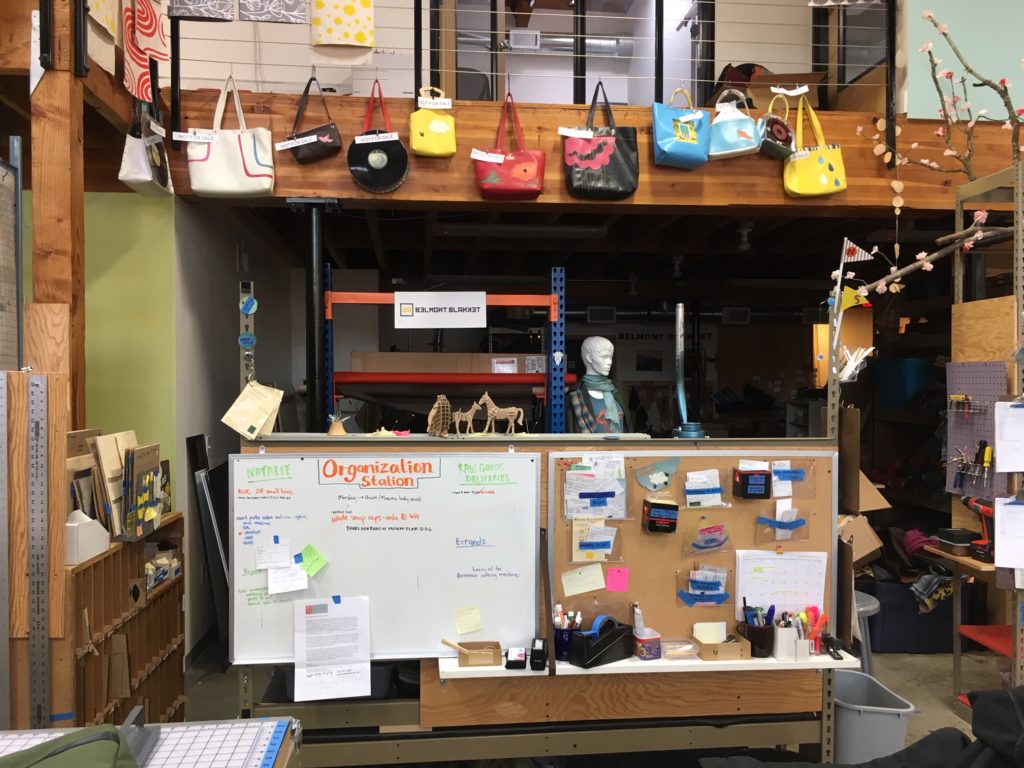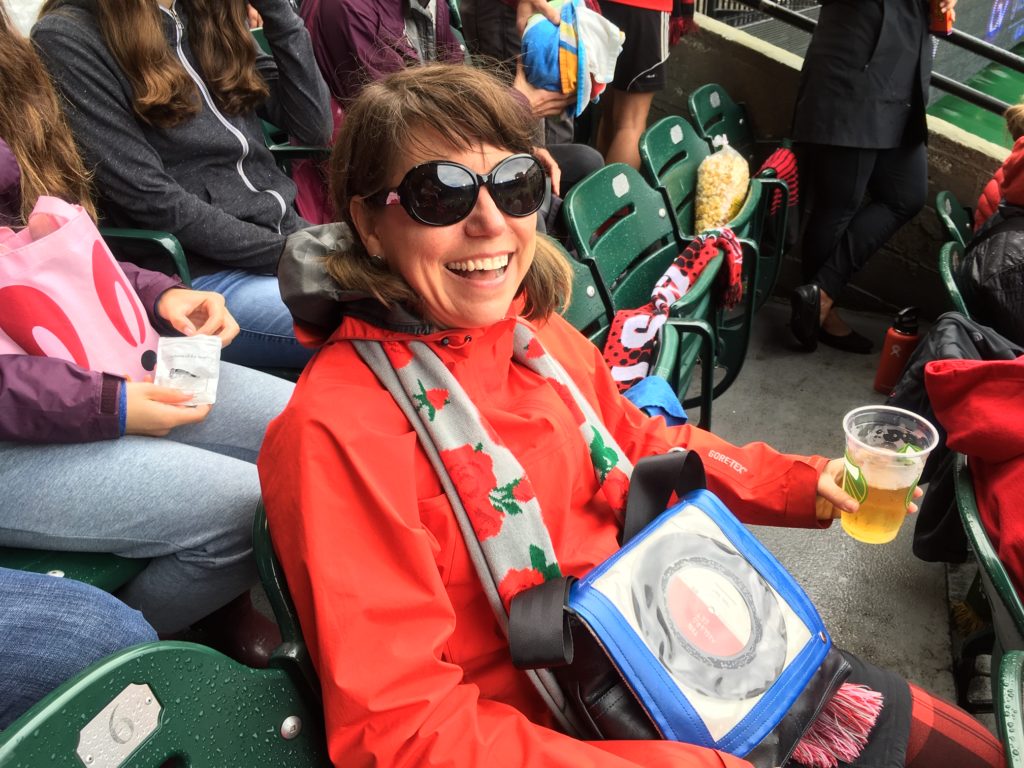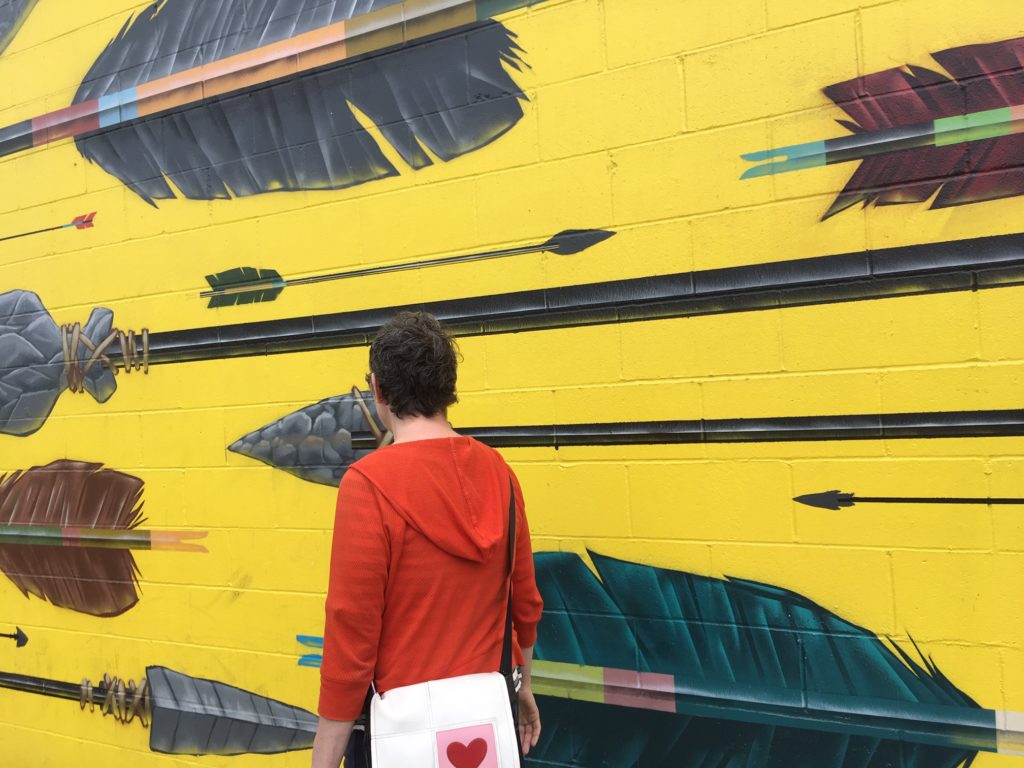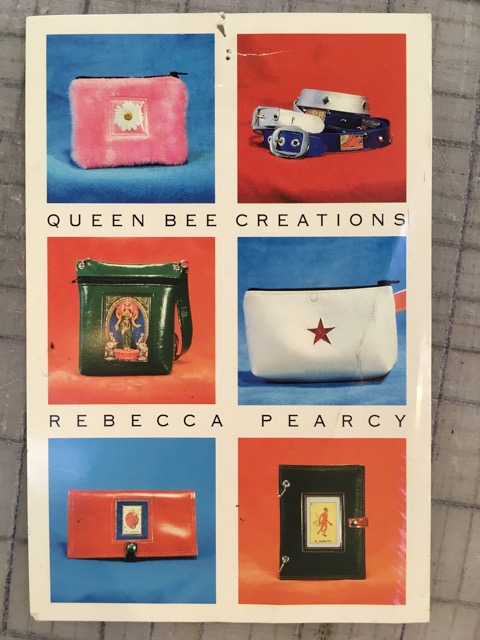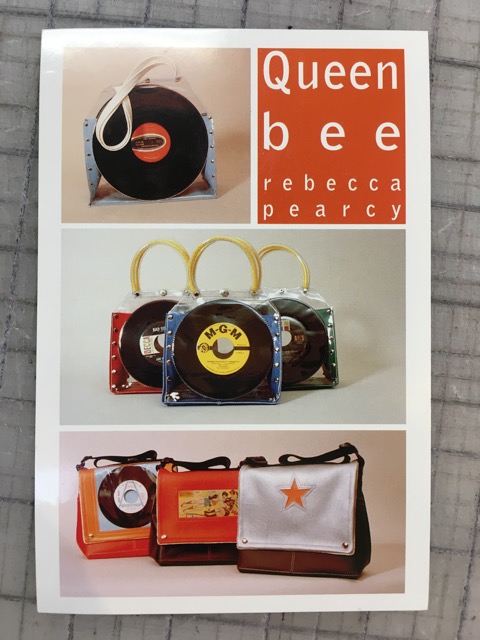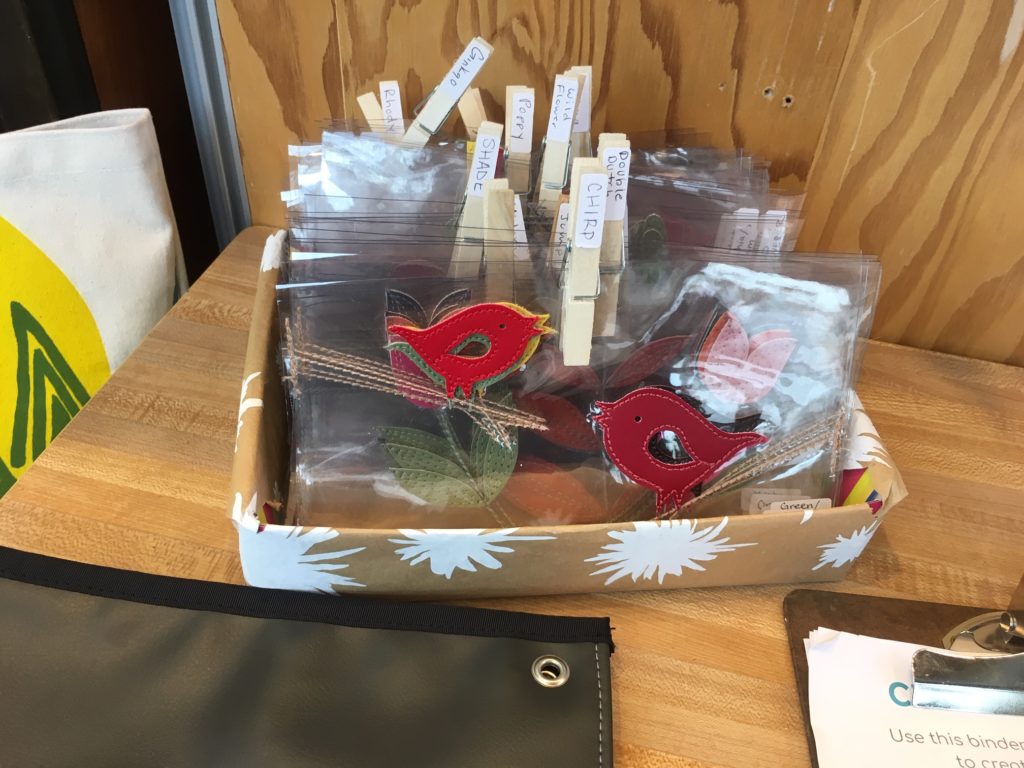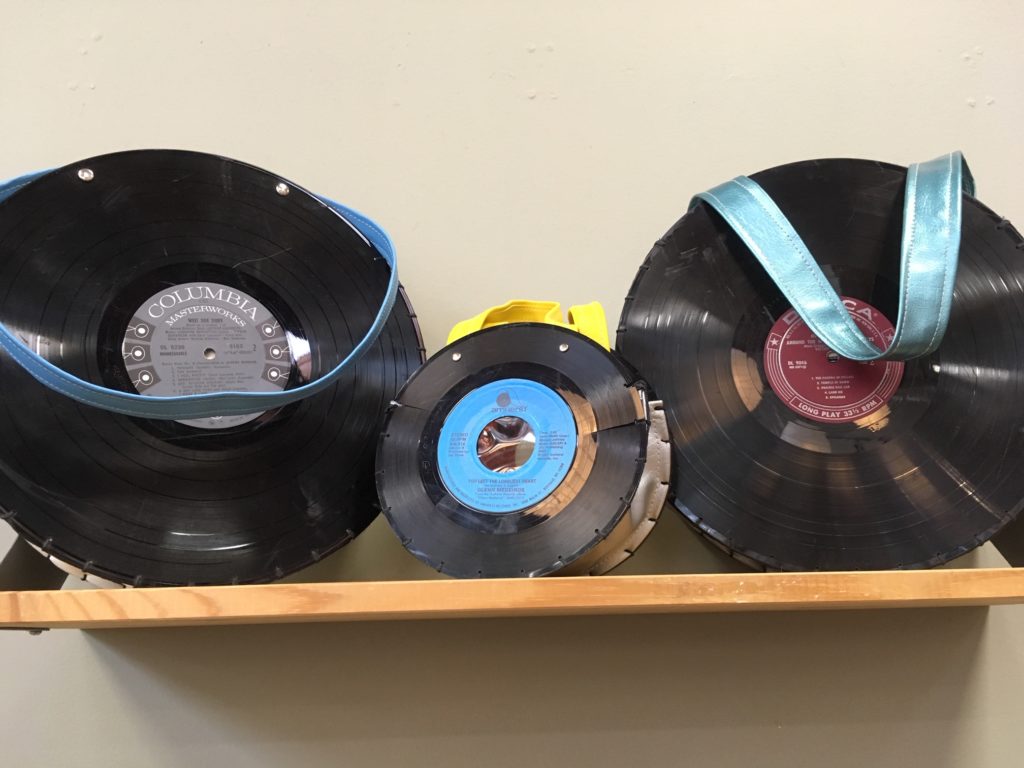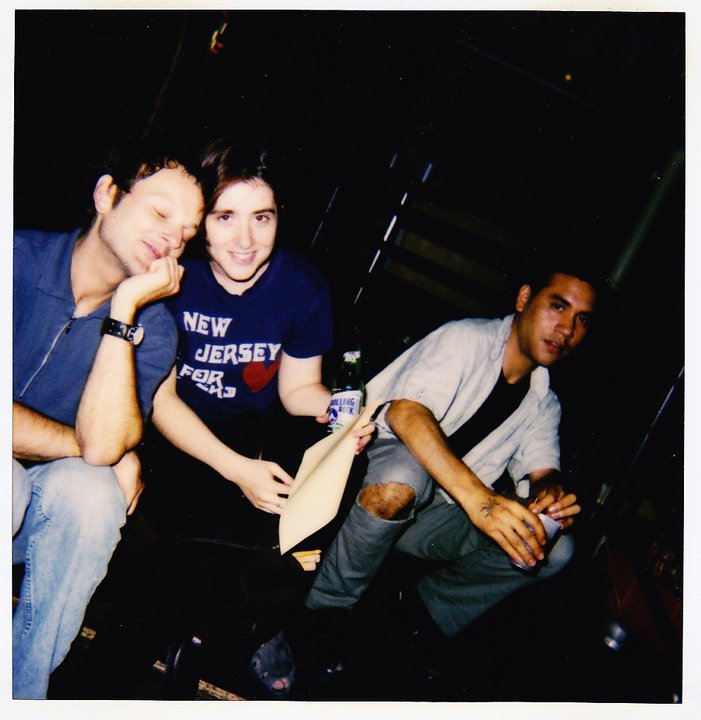
This is another poll that didn’t fit into chickfactor 19!
What were you wearing in 1992? Like what was your style? What was your uniform of choice?
Claudia Gonson / The Magnetic Fields (pictured): Hoping that you will dig up some of the many great photos you took of me. In one of them, I am wearing a “New Jersey Is For Lovers” shirt that I still occasionally wear, although it is full of holes now and best suited for night wear. I found it at a Goodwill in Honolulu (!), summer of 1992.
Janice Headley (CF/KEXP): Thrift-store vintage dresses with mens’ blazers and oxford shoes. Black-and-white striped tights with fake Doc Martens and XL band tees as a dress. Big eyeglasses because my parents deemed me too young for contact lenses.
Daniel Handler: Whatever was on the floor of my room.
Ed Mazzucco / Shelflife Records: Worn out jeans, flannels and Doc Martins.
Kristin Thomson (Tsunami, Simple Machines Records): Golf jacket, cutoff cord shorts with tights, baggy t-shirts or Japanese baseball uniform tops
Clare Wadd (Sarah Records): Well, we didn’t have any money so clothes weren’t really a thing for us. Mostly skirts and t-shirts, black tights, flat shoes. I don’t think I could afford DMs then, though I always wanted some. Lots of jumpers in winter.
Stuart Moxham (Young Marble Giants): Same as now, jeans, shirt, brogues. I have a lot of jackets.
Alicia Vanden Heuvel (the Aislers Set, Poundsign, Speakeasy Studios): Baggie t-shirts, doc martins, flannels, hats, and black eyeliner. I was a goth/grunge teenager who just had her life changed by Nirvana and the Breeders.
John Lindaman: I think 1992 was square in the middle of a horrible Hawaiian shirt and long hair phase. Apologies to all.
Beth Arzy: Fred Perry tops, thrift shop brown cords, Mary Jane shoes or flowery 60s dresses. Band tee shirts. Cardigans and jeans.
Peter Momtchiloff: A western shirt, a suede jacket, and horrible black Levi jeans
Theresa Kereakes: 1992 found me wearing a uniform of pleated plaid skirts, black tights, black turtlenecks, string of pearls, and before you think, “preppy beatnik” I always wore Doc Martens. I worked at PBS and I treated it as if it were Catholic school.
Dickon Edwards: I think I was trying to wear stripey blue and white matelot t-shirts, alongside band t-shirts, plus jeans. The whole hooded top look associated with ‘Madchester’ had died away by then, and I think the whole grunge explosion had left everyone in simple band t-shirts and jeans.
Kevin Alvir: I was a child, so like gigantic t-shirts that doubled as a tunic with umbro shorts.
Tracy Wilson (Turntable Report): Vintage dresses, thrift store cardigans, saddle shoes, Bettie Page bangs, and a Sanrio bag—likely Little Twin Stars or Hello Kitty.
Gail CF: Vintage raincoat, black shorts with leggings underneath, fluevogs, flannel shirts, enormous indie Ts, Mr. Friendly backpacks.
Fred Thomas: It was a transitional time, and I’m pretty sure I mostly wore band shirts (Misfits, Jane’s Addiction, Smashing Pumpkins, Black Flag, etc.) and big, huge skater pants.
Pete Paphides: the search for a classic button-up cardigan like the ones worn by people’s parents in the 1950s and 1960s is a lifelong pursuit.
What were you wearing in 2002?
Claudia Gonson / The Magnetic Fields: Height of the 69 Love Songs era. I wore a selection of tight sports jackets in very bright colors, some of which make a word when you zip them up- “BER-LIN”. “BROOK-LYN”. Etc. Also, I was obsessed with British caps.
Daniel Handler: Suits, when I went out.
Ed Mazzucco / Shelflife Records: Corduroys, Gingham shirts and Jack Purcells
Kristin Thomson: Maternity wear, but not the stuff that makes you look like an infant.
Stuart Moxham: As above
Alicia Aislers Set: Those were Aislers Set days and my favorite things to wear were stay pressed Levi’s, button up shirt, a tie or sweater vest, parka. Of course stripes because, Jean Seberg…
John Lindaman: All brown.
Janice Headley: Low rise bootcut jeans, spaghetti-strap tops, platform shoes, and baby barrettes in pixie-cut hair, because I was young.
Beth Arzy: Less garish dresses, Fred Perry tops, unmemorable skirts. Band tee shirts. Cardigans and jeans.
Theresa Kereakes: In 2002, I was on the road with a 200-person crew. T-shirts and jeans.
Kevin Alvir: Some sort of striped t-shirt with a jean and some purposely fun sneakers. The face of fashion: the look of an overgrown child.
Gail CF: I was working at a teen magazine in NYC. Casual, comfortable. Vintage dresses, motorcycle boots, gingham, sneakers.
Tracy Wilson: It’s a mod mod world.
Fred Thomas: Almost entirely thrift store attire, and I had yet to realize that synthetic fabrics weren’t really the way to go for me. Lots of polyester pants, ill-fitting cowboy shirts, tight polo shirts in springy colors, corduroy jackets, and I definitely had one of those garage rock caps that people wore in 2002.
Jim Ruiz: In 1984 I was a real thrift shop Mod, by the mid-’90s, these clothes had worn out and I was reduced to wearing pajamas as stage clothes or trying to dress like a college professor. Now, almost 40 years later, thanks to narrow lapels and skinny jeans and the internet! I am able to dress the way I’ve always wanted to, and better! Plus, I still have a full head of hair, and my former bandmate Allison has been cutting it for me. I feel really lucky, it’s crazy. Thanks for asking!
Dickon Edwards: Suits and ties!
Pete Paphides: May I refer you to my previous answer?
What were you wearing in 2012?
Claudia Gonson / The Magnetic Fields: I had a daughter in the summer of 2010 and don’t particularly remember the next 3 years. I did go on tour for over 2 months of 2012, insanely. I must have worn clothes.
Ed Mazzucco / Shelflife Records: Dark jeans, more gingham shirts and Onitsuka Tigers
Kristin Thomson: Skinny jeans, vintage tops or band t-shirt, zip up hoodie
Stuart Moxham: As above
Alicia: Same thing as 2002. Ha ha ha
Beth Arzy: Band tee shirts. Cardigans and jeans. Same as the above… Same as it ever was.
Fred Thomas: No more synthetic materials! A combination of basics (many pilfered from my job at American Apparel) and a few nicer, more interesting pieces either found in thrift shops or from high end men’s fashion retailers.
Theresa Kereakes: I moved to Tennessee in 2008, and it’s fairly warm for the most part. I like a sun dress and a straw hat.
John Lindaman: All grey.
Clare Wadd: Jeans a lot
Kevin Alvir: Hair with intention. A striking sweater or cardigan and fitted jeans.
Gail CF: Living in Portland so durable rainwear; red clogs; A-line skirts; cardigans; I basically dress like Paddington Bear in general. Hair: long with bangs.
Dickon Edwards: Suits and ties!
Daniel Handler: Cardigans.
Tracy Wilson: Space Age flight attendant
What are you wearing in 2022?
Ed Mazzucco / Shelflife Records: Gray jeans, hoodies, Doc Martins or Onitsuka Tigers
Kristin Thomson: Today, I am wearing my “Ripley” outfit. Army green long sleeved jumpsuit/flightsuit, sneaks.
Stuart Moxham: As above but with trouser braces and hats.
Alicia: Well, now I like to throw in some comfortable jeans, a soft sweater, old man slippers, maybe even sandals sometimes! I’m getting old. It’s time to embrace the inner Mr Rogers.
Beth Arzy: Have fallen in love with loafers and have many pairs of Adidas. Bit more conservative on the clothes side with more acceptable things in the wardrobe for work. More Fred Perrys. Band tee shirts. Cardigans and jeans.
Claudia Gonson / The Magnetic Fields: I am currently recycling some very old shirts that I found in my folks’ house a year ago. In college, like many, I wore loose baggy T-shirts. I found some pretty great ones from the late 80’s and early 90’s, souvenirs from a cross country trip in the early 90’s (Stonehenge in Maryhill Washington, Calamity Jane museum in Deadwood, S Dakota), Also, multiple shirts with artwork by Jad Fair. So, under my winter sweaters, I am enjoying wearing my old weirdo Tshirt collection right now.
John Lindaman: As many colors as I can bring myself to wear (still mostly grey).
Clare Wadd: Jean even more. T-shirts, jumpers, currently vests. It’s still cold. Dresses when I go out, but still home a lot.
Peter Momtchiloff: A cardigan and pinstripe trousers
Fred Thomas: I now have way too many clothes, as some of the Jane’s Addiction shirts from 1992 and tight polo shirts from 2002 are still in rotation. I try to stick to more basic, streamlined presentation these days, but get inspiration from films, record covers, and other images that most people wouldn’t register just by quickly scanning my outfit.
Theresa Kereakes: Pajamas! “Work from home” means I ask myself, “Am I working in my PJs or sleeping in my clothes?” It’s all yoga pants and hoodies over band t-shirts purchased during the dark days of lockdowns as a way to put money into the non-touring economy.
Kevin Alvir: I wear what I wore in 1992…which is like a gigantic tunic with shorts.
Gail CF: comfy dresses, tunics, leggings, athleisure. Carhartt! I seem to be addicted to thermals and flannel.
Janice Headley: Big, thick sweaters and high-rise jeans ’cause it’s cold AF here in MI.
Dickon Edwards: Suits and ties!
Daniel Handler: Ill-fitting outerwear.
Tracy Wilson: Soft pants and all the colors.
